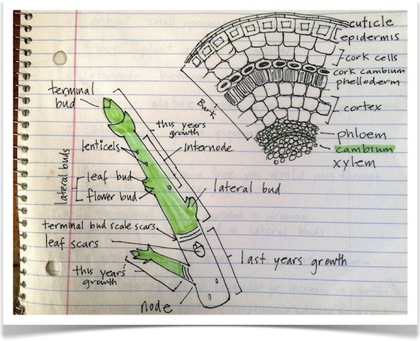simplified anatomy of a tree.
Xylem – this is the what we call the woody part of the tree. It has cells that are alive and no longer alive. It’s primary functions are to conduct (sapwood) dissolved nutrients and water  from the roots upward and also helps to form the woody element in the stem creating the physical structure of trees. It also stores food in the form of carbohydrates.
from the roots upward and also helps to form the woody element in the stem creating the physical structure of trees. It also stores food in the form of carbohydrates.
Phloem – is what grows around the wood. It is vascular tissue and it moves the carbs other metabolic products down the trunk form the leaves and the old phloem makes up the outer protection (bark) of the branches and trunk.
Roots need moisture and oxygen to grow. they are what conduct, store food, in the form of carbohydrates and anchor the tree in the ground. Also, the little ones absorb dissolved minerals and water. Fungus often lives in a symbiotic relationship with the roots of a trees and plants. This connection is what we call mycorrhizae.
For the most part leaves are the organs of transpiration and the process plants use sunlight to make food from water and carbon dioxide (photosynthesis). This process produces oxygen.
these articles are being updated when time allows so it will be continued..